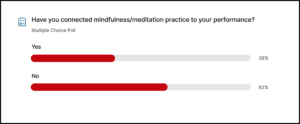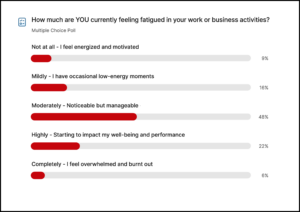Our event on Avoiding Change Fatigue: Keeping Sight of Humans with Ongoing Change was held on January 28, 2025. Considering today’s current work environment, change is constant and continuous. This session highlights practical strategies to help teams manage overlapping changes while maintaining motivation and productivity.
Dana Otto, Senior Advisor at Farwell, shared her expertise on change management, emphasizing that change can come from both internal (planned) and external (unplanned) sources. She emphasizes that reactions to change are individual and very different for everyone. Otto outlined the TIE Model as a framework for managing change: Transparency (keeping employees informed), Inclusion (helping employees feel in control), and Empathy (ensuring people feel understood). During periods of change, resistance is inevitable. Resistance to change is typically driven by unclear reasons, poor management, or fear of loss. She offered advice for managing both yourself and others during change, stressing the need for self-compassion, proactive thinking, and assuming positive intent. For teams, creating an environment where learning, celebrating wins, and defining progress are key to navigating change successfully.
Chad McGehee, Director of Meditation Training at UW-Madison Athletics, emphasized the importance of mindfulness in avoiding change fatigue and improving performance.He explained that a leader’s ability to manage their nervous system has a profound impact on how they show up and lead. Meditation, which trains the mind and enhances neuroplasticity, serves as a foundation for resilience and adaptability. He recognizes more often than not, people are quick to think about what is next. Meditation helps address these challenges by promoting self-awareness, and adaptability, and fostering a mind-body connection.

A study done with Division 1 women athletes showed that mindfulness improves mood, energy, and muscle readiness while reducing acute injuries by 58%. This can be directly translated into the workplace. McGehee argued that meditation is a competitive advantage, supporting both personal and organizational goals, and creating cascading benefits. By practicing mindfulness, individuals and teams can make incremental improvements that lead to foundational changes, ultimately enhancing overall well-being and performance.

Finally, Dr. Jirs Meuris, Professor of Management and HR at the Wisconsin School of Business, echoed that change results in uncertainty and anxiety for many. To reduce resistance and fatigue, Meuris emphasizes the importance of giving individuals a voice. This has been shown to increase their commitment to the organization and support their mental well-being. His final remarks emphasize that leaders should empathize with employees by understanding their concerns and making small adjustments to support them through change. By demonstrating how change aligns with employees’ personal goals, leaders can keep them motivated and engaged.